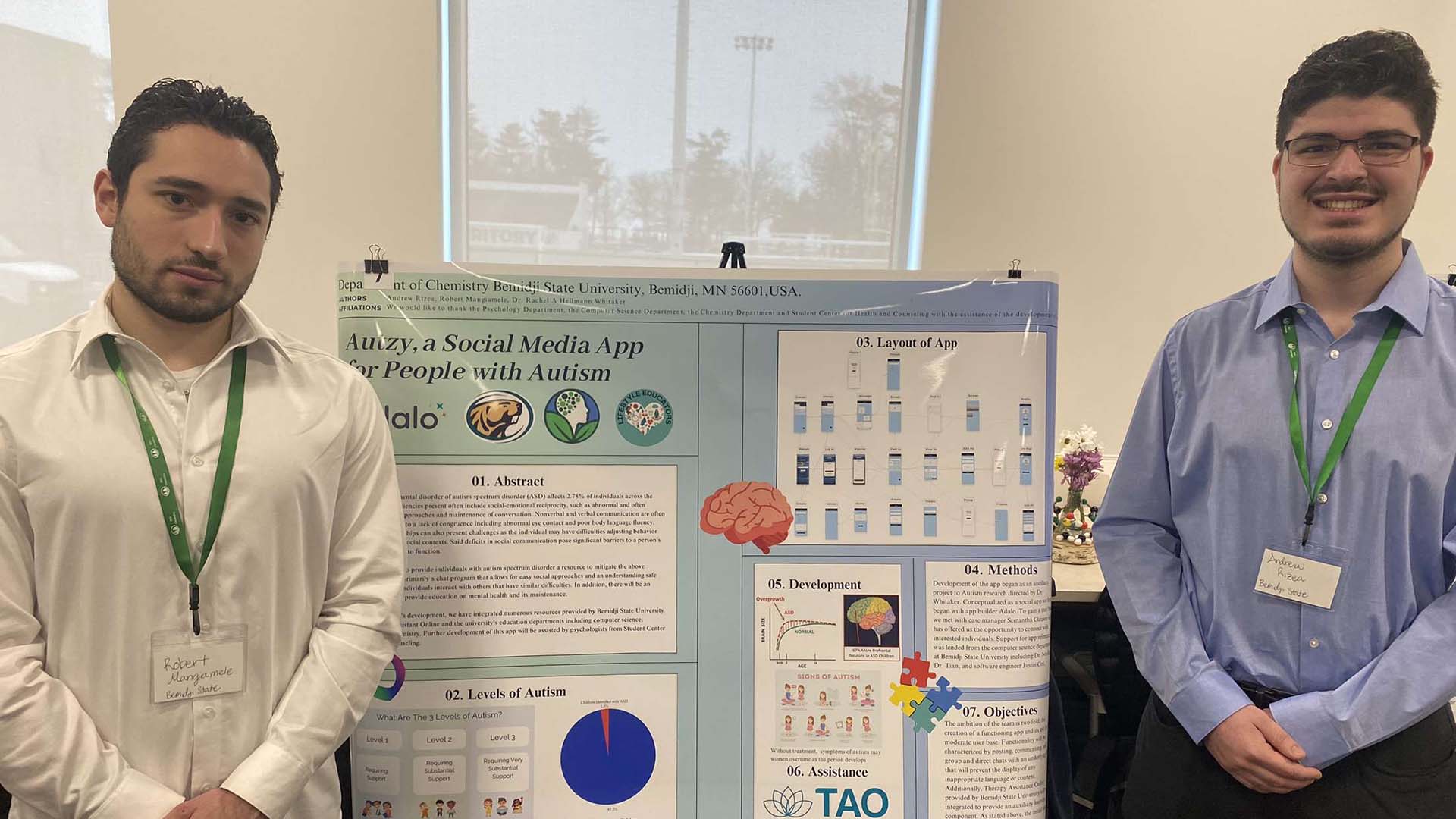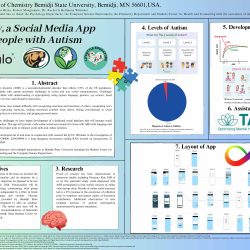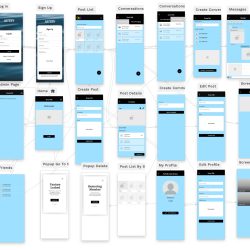
 |
| The students’ presentation poster |
 |
| The Autzy functionality flowchart built by Mangiamele and Rizea in Adalo |
People on the autism spectrum may soon have access to a safe, supportive way to connect with each other using an app being developed by a pair of Bemidji State University students.
The social networking app, called Autzy, was presented by BSU students Andrew Rizea and Robert Mangiamele during the Red River Valley Association of the American Chemical Society Conference held on the BSU campus in February 2024.
Mangiamele and Rizea have been working with Dr. Rachel Hellman Whittaker, associate professor of chemistry at Bemidji State, exploring the role that an RNA gene called LINC 00896 might play in autism spectrum disorder.
“From there, we got the idea of applying our knowledge of autism in more practical ways and helping those individuals,” Mangiamele said.
Rizea said the idea began to form after speaking with parents following Hellman Whittaker’s Honors Council Lecture Series presentation on the gene in November 2023.
“Some of the parents we talked to afterward were concerned about how they might support their children with autism,” he said. “So this was really what inspired us to develop an app specifically for them, where they have all the support in a welcoming and secure environment with the supervision of professionals.”
Hellman Whittaker says her eldest daughter is on the autism spectrum and that the project could provide support for a group of people who can often feel isolated and suffer from anxiety and depression.
“Autistic people often have social difficulties connecting with others, and these students wanted to explore different ways to bring them together,” she said.
Rizea and Mangiamele have built a framework of their app in Adalo, an online platform that allows people to build prototypes of mobile and web apps without the need for code.
“We’re very limited in coding experience, and Adalo is designed for us,” Rizea said. “It lets us build a foundation of the social media app. We have a base now, and we can expand our team to include computer science people who can assist us.”
Mangiamele said the app’s initial focus will be on messaging and access to support resources, with the potential for additional features as the project develops. He said the app will also integrate with Therapy Assistance Online, an online resource available to all BSU and Northwest Technical College students through the schools’ respective websites. The system provides access to a series of toolkits that provide information and support on a variety of subjects including stress management, focus and ADHD, and making connections with a community, among others.
“By integrating with TAO, the app will include a page where individuals can learn about ways to manage mental health or physical stress,” he said.
With a prototype in place and working in Adalo, the pair is now exploring the next steps to move Autzy from a concept to a functional app.
“We’re working with the computer science department to try and iron out some of the issues with finalizing a working product,” Rizea said.
Rizea added that the pair also plans to recruit volunteers and individuals who are on the autism spectrum through contacts at the Student Center for Health and Counseling to help them test the app and its functionality.
The students hope to have a working prototype in place by the end of the spring semester. Hellman Whittaker said the project has the potential to be a significant source of support for people on the autism spectrum.
“If this gets off the ground, I hope it has an impact on the autistic community,” she said. “This can bring folks together and help them create connections with other people. It’s also a step in the right direction to be more inclusive to neurodivergent folks.”
The Autzy app was one of 10 projects presented by Bemidji State students at the American Chemical Society Conference. It was one of three that focused on the LINC00896 RNA gene; other topics included the effects of mercury concentration on a certain fish in northern Minnesota lakes, and several methods for detecting hydrogen sulfide.
